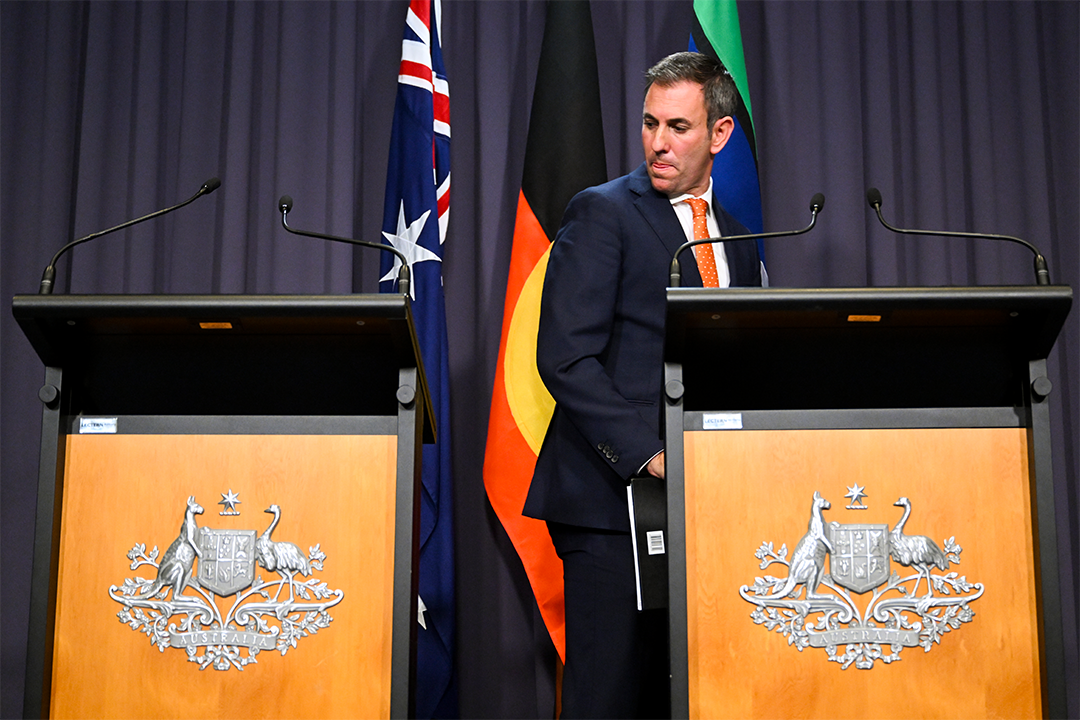

The Albanese government has finally announced a major retreat on its proposed controversial superannuation changes.
The plan to tax unrealised capital gains has been dumped altogether, and the proposed new $3 million threshold will be indexed, as well as a $10 million threshold that is being added.
Prime Minister Anthony Albanese (currently on a week’s holiday) drove the retreat, which was announced by Treasurer Jim Chalmers. Earlier on Monday the cabinet ticked off on the revamp of the original plan.
Chalmers said he had been working on alterations to his earlier plan for some time. He denied he had been “rolled” by the prime minister. “Of course not,” he said.
“The prime minister and I have had discussions over recent months about finding another way to satisfy the same objectives, and that’s what’s happened here,” he said.
Albanese’s caution on the original superannuation changes is being interpreted as a warning Chalmers will have difficulty getting the prime minister to agree to any ambitious tax reform he might hope to make.
The government took the original plan to tax at 30% the earnings on balances of more than $3 million to the election. That plan also included a move to tax unrealised capital gains. Critics pointed out that taxing unrealised gains would hit those with non-liquid assets such as farms in their superannuation. The failure to index the threshold would draw an increasing proportion of people into the new tax net.
The proposals have been under attack for months, including from former treasurer and prime minister Paul Keating who directly lobbied Albanese.
Keating said in a statement after the announcement, “these decisions solidify superannuation tax arrangements in a manner the community can now rely upon for the long-term security of their retirement savings and with it, their peace of mind”.
Keating went out of his way to give credit to Chalmers for the work.
Under the rejigged plan the government has added another threshold, of $10 million, to its original plan. On earnings on balances between $3 million and $10 million, the tax rate will be 30%. On earning on balances over $10 million the rate will be 40%.
At present the tax on superannuation earnings is 15%.
Chalmers said the changes were practical and pragmatic and satisfied the same objective and the original proposal.
He said there would be commensurate treatment of defined benefit interests.
The changes would extend the existing exemptions for some judges to improve consistency across jurisdictions.
The government is also increasing the low-income superannuation tax offset (the LISTO) by $310 to $810 and raising the eligibility threshold from from $37,000 to $45,000 from July 2027. This will cost $435 million over the forward estimates. The LISTO is a boost provided by the government for the superannuation of low income earners.
The start of the new plan, which had been due to begin from July 1 this year, has been delayed until July 1 next year.
The net impact on the budget of the rework is about $4.2 billion over the forward estimates, much of which is due to the one year delay in implementation.
In the first full year of operation, 2028-29, the package will bring a budget saving of about $1.6 billion in net terms, including the cost of increasing the LISTO.
Chalmers said the legislation would be introduced as soon as possible in 2026.
The treasurer spoke with the Greens – whose support the government expects to need to pass the legislation – on Monday. Later the Greens said in a statement they would look at the detail of the changes but were concerned that “the government has further weakened what should be a tax to ensure the super wealthy top 0.5% pay their fair share of tax”.
Shadow treasurer Ted O'Brien said the opposition had fought the original unfair plan all the way and this was “a victory for a coalition of common sense”.
“The treasurer has been chewed up and his tax plan has been chucked out.”![]()
Michelle Grattan, Professorial Fellow, University of Canberra
This article is republished from The Conversation under a Creative Commons license. Read the original article.